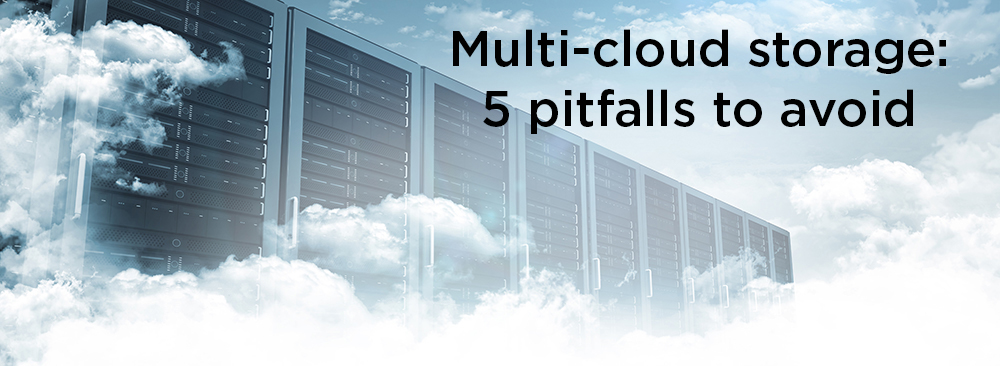With ever-increasing data, the need for sophisticated data analytics and the ubiquitous requirement of maximum system performance, it is understandable that organizations would elect to move to a multi-cloud environment.
In this article we focus on 5 pitfalls to avoid when deciding on your multi-cloud storage:
1. Beware of the cloud broker
2. Vendor lock-in
3. Compatibility of solutions
4. Firewalls
5. Powerful does not equal easy
Yes, multi-cloud storage is a fantastic way to cut costs, guarantee reliability and enhance storage performance. However, working with multi-cloud providers is usually not a short-term decision. You are devising a long-term strategy with high-stakes goals such as increased agility when required.
1 Beware of the cloud broker
Sales pitches often emphasize consistent experience and controls across clouds, however, in reality you are often stuck with outdated APIs and boxed into lowest common denominator services. The takeaway here is to stick with native access to your cloud and to be vigilant and spot rebadged old software that are now sold as hybrid to ensure the product remains relevant.
2 Vendor lock-in
Although there is a general assumption that multi-cloud can avoid vendor lock-in, the reality is much different. In reality you are going to have to make a trade-off between using advanced application capabilities (cloud-native) and in this context have to accept vendor lock-in or keep the app generic and thus less optimum if you want to avoid that lock-in. Therefore, whether you use a single-cloud architecture or a multi-cloud one, the trade-off remains the same.
3 Compatibility of solutions
It is important, in a multi-cloud environment, that all solution rollouts are compatible with every cloud in the multi-cloud environment. This can be difficult to achieve if you do not give due consideration to time and budget restraints.
4 Firewalls
A firewall, one of your network’s primary defence applications, are not easily scalable to a multi-cloud strategy. It must be tailored individually for each cloud since very few firewalls have evolved to address scaling concerns of multi-cloud infrastructure.
5 Powerful does not equal easy
That a multi-cloud strategy is an important IT goal is not in dispute but transitioning from on-prem or single-provider IT to multiple cloud providers is not easy. The challenges that might surface are due mostly to technical complexity so unless you have in-house expertise, you will need third-party cloud engineers or an MSP to drive this transition for you. It is therefore important to ensure you have the right expertise before embarking on this journey.
It certainly is an exciting time to adopt cloud storage to boost innovation and speed up the time value for IT projects. With the new pricing model, companies only pay for what they use. Stage2Data, for example, offers cloud storage at 20 CAD/USD per TB with no hidden costs. Ultimately, the excitement about multi-cloud storage brings with it increased awareness of protecting your cloud storage footprint.


